Comparing six major points of the Lou Gehrig and Cal Ripken Jr. consecutive-games streaks

The following is excerpted from the book The Streak by John Eisenberg. Copyright © 2017 by John Eisenberg. Reprinted by permission of Houghton Mifflin Harcourt Publishing. All rights reserved.
Several dozen reporters awaited Ripken when he arrived at the Orioles’ spring training camp in Sarasota, Florida, in early April 1995. In the wake of a ruinous work stoppage, with Gehrig’s record in sight, his streak was one of baseball’s few positive stories.
At a press conference in a packed room, Ripken stepped to the podium, cleared his throat, and said, “I’m here to announce I’m retiring from baseball to pursue a career in the NBA.” Laughter filled the room. A year earlier, basketball star Michael Jordan had retired at his peak to play pro baseball.

The Streak
by John Eisenberg
The story of baseball’s “Ironmen,” two players from different eras who each achieved the coveted record of most consecutive games played.
Ripken’s playfulness reflected his altered view of his pending achievement. He had long felt defensive about the streak, but now he sensed support from all parties—the media, fans, opponents. It seemed everyone wanted to see him break the record.
He was optimistic that it would happen in a good year for the Orioles, who were coming off their most successful season in a decade—63-49 before the strike—and had their core returning. But inexplicably, Angelos had fired Oates, the team’s most successful manager since Earl Weaver, creating a sense of unease.
The new manager, Phil Regan, was a former major league pitcher whose baseball career dated to the 1950s. Though he had waited almost four decades for the chance to manage a big league club, he was knowledgeable, seemingly a solid hire. But he had never been around the Orioles or their players, and it was the wrong year to introduce a new man with new ideas. A shortened spring training gave teams less time to prepare for the regular season and fewer exhibition games. The Orioles, in the midst of a search for a permanent spring training home, rented a facility unequipped to host games, leaving them scrambling.
“We had five days of practice and maybe a dozen exhibition games, all on the road, before the season started. We were on a bus every morning in Florida,” Regan recalled for this book, chuckling at the memory. “At a couple of places in Florida, they gave us a field for an hour before a game so we could practice bunt plays and relays. We didn’t get much practice in, and the season kind of went from there.”
The Orioles opened with three straight defeats and did not climb back to .500 until the season was more than half over and they were well back in the division standings. Regan bristled as his team struggled; his genial nature masked an intense competitive streak. He would last just one year on the job and often felt like an outsider. It took him several weeks, for example, to discover that Ripken occasionally called pitches for the Orioles’ younger starters.
“I called in a catcher one day after a game and said, ‘What were you thinking with that pitch?’ ” Regan recalled. “The catcher said, ‘I didn’t call it; Cal did.’ My response was, ‘He did?’ The catcher told me, ‘He doesn’t call them all; maybe 15 or 20 a game.’ I called Cal in and he said, ‘I heard you were a little mad.’ I wasn’t mad, just wanted to know if [I could help in any way]. He kept doing it, and he called the plays in the infield, too. He was like a coach on the field.”
Overall, Ripken, Regan recalled, was “one of the easiest guys to manage. He was always engaged. You never had to ask how he felt.”
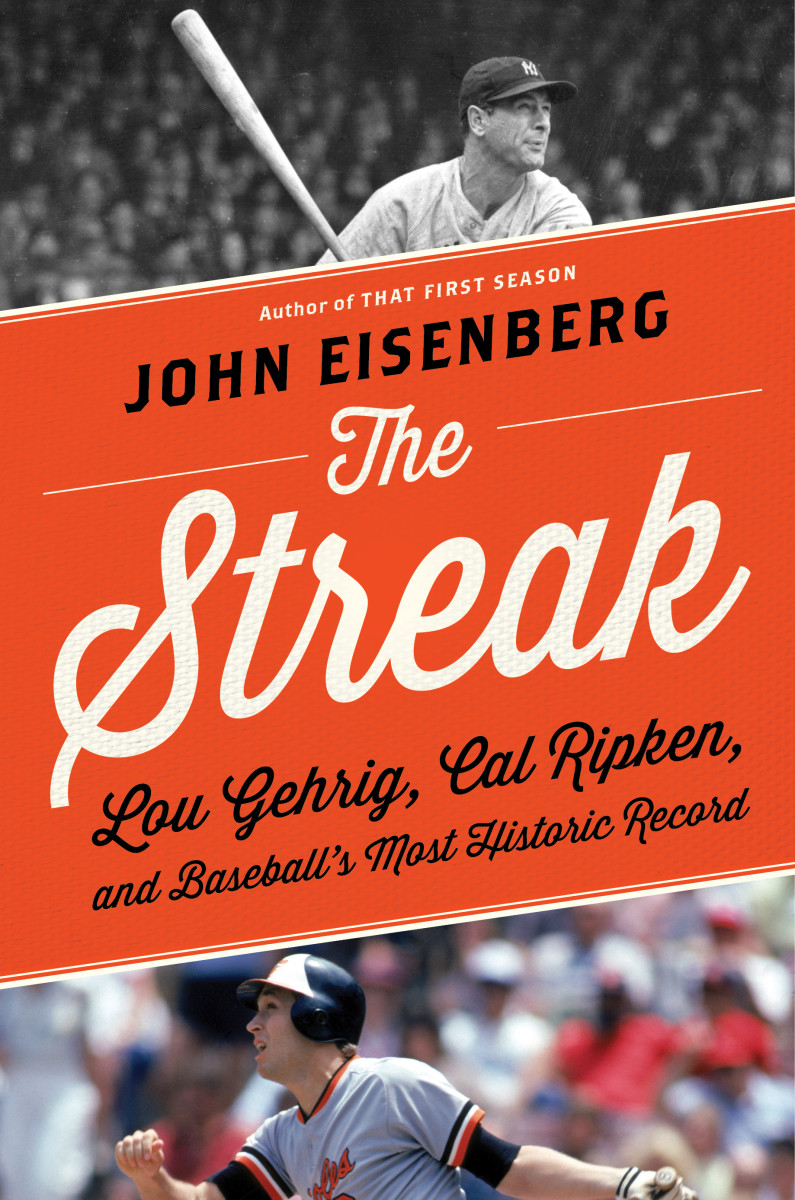
But while managing Ripken in 1995 was not stressful for Regan, it was a unique circumstance. As Ripken crept closer to Gehrig’s record, so many reporters clamored for interviews that John Maroon, the Orioles’ director of public relations, was compelled to devise a system. Ripken conducted a group interview in the dugout before the first game of every road series. Then he was off-limits for the rest of the series.
“It was a media crush that just went on and on. It was a lot of pressure on Cal. I thought he handled it well,” Regan said.
An even greater obligation was the memorabilia requests from opponents who wanted Ripken to sign balls, bats, and other items—a form of professional courtesy common in the major leagues. As Ripken neared Gehrig’s record, he was inundated.
“It could be a thousand items per series. Cal had said he would sign anything, and people took him at his word,” Regan said. “We would wait until the last game of the series was over so all the requests were in, and then he would sit and sign. We would hold the bus [to the airport] until he was done. This happened all season.”
Though his days were long, Ripken did not crumble under the burden, Regan said. To the contrary, Regan recalled him maintaining almost a childlike exuberance.
“Early in the season, we had an afternoon game at Tiger Stadium in Detroit, finished it, and then he and four or five guys went back out to the field for a pickup game,” Regan recalled. “I asked Cal if he wanted us to hold the bus. He said, ‘No, you go on ahead.’ I think Brady [Anderson] went out there with him, maybe Mussina. They just wanted to play. You don’t see that kind of thing anymore. Cal was like a guy from my day who just loved being around the game.”
(What actually happened, Ripken said two decades later, was either he wanted to hit balls off a tee on a field as opposed to in a batting cage, or he and several teammates wanted to run sprints on the field. “Could be a combination,” Ripken said. “I wish I could say we were playing a pickup game.”)
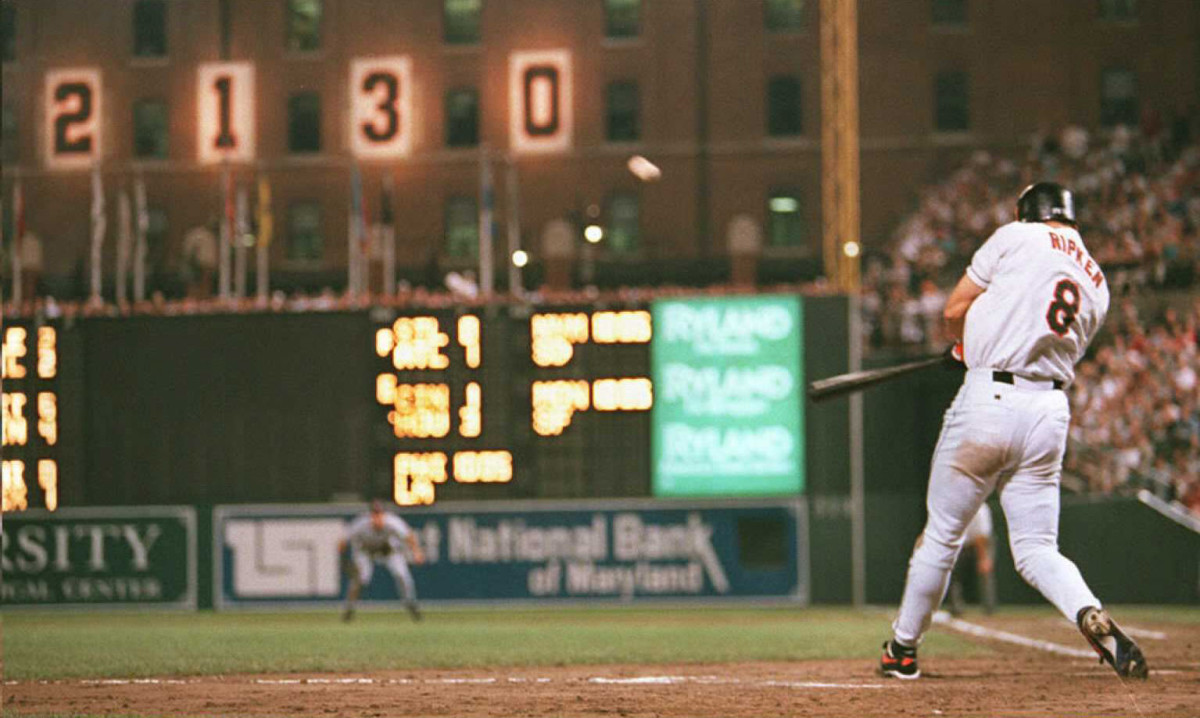
It was not Regan’s first experience with a record-setting Ironman. He had played with Billy Williams on the Chicago Cubs from 1968 through 1972, the period that included the years when Williams approached and passed Stan Musial’s National League consecutive-game record and went on to play in 1,117 straight games.
Regan saw Williams and Ripken as similar. “Both were very easygoing, quiet, never really got upset about anything, but most of all, they just loved to play,” he said. “I think that’s what kept them going out there day after day. It’s like when you were a kid in the backyard. You didn’t think about fans or statistics or uniforms; you just had fun playing. Cal and Billy still had that mindset. Really, those guys were exactly the same that way.”
The Orioles’ season evolved into a valedictory tour for Ripken. At home and on the road, he was serenaded with applause and cheers, and signed autographs, sometimes for several hours, after the final pitch. One night in Minnesota, he was still signing at midnight as a line of fans snaked up an aisle in the lower deck.
No longer was there talk of Ripken’s possibly undermining the Orioles’ playoff chances by playing every day. The “take a day off” chorus had been silenced, partly due to the public’s excitement over his pursuit of Gehrig’s record, and also because Ripken played well enough in 1995 to quell the thought before it gained momentum. His average hovered around .290 and occasionally spiked over .300. In early June, he cracked a grand slam. In late July, he hit two home runs in a game. His strong defense continued. Though now in his mid-30s, Ripken would lead the American League’s shortstops in fielding percentage for the fourth time in 1995.
On August 9, he drove a pitch over the left-field wall at Yankee Stadium, where so much of Gehrig’s career had unfolded. The ball landed near the plaque honoring Gehrig in the Yankees’ Monument Park, beyond the fence. It was almost as if Ripken were tipping his cap to the Iron Horse, dead now for 54 years. New York’s savvy fans stood and cheered Ripken as he rounded the bases. Ripken later said the ovation gave him chills.
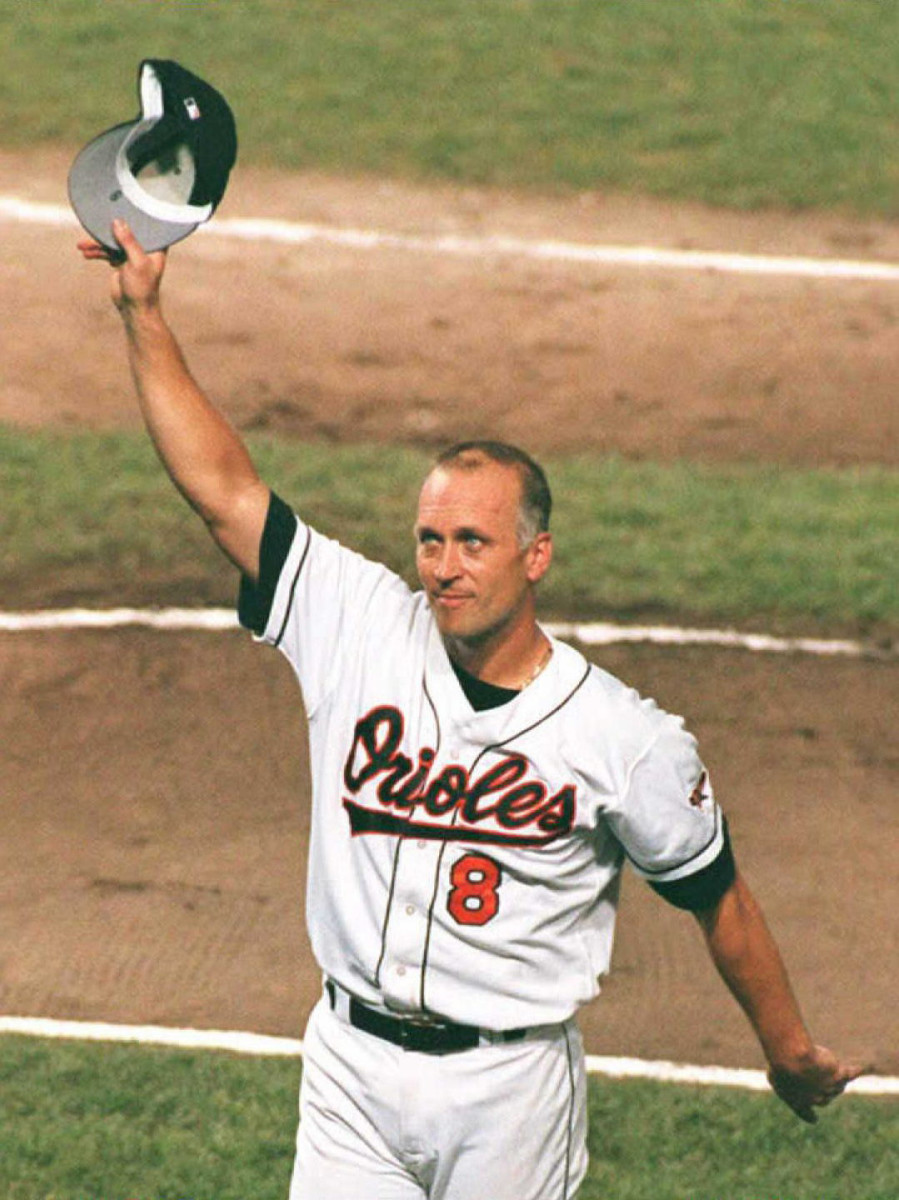
As much as he wanted to avoid being compared to Gehrig, he knew it was inevitable. As he crept closer to the record, Sports Illustrated Kids put Ripken and Gehrig together on its cover, photoshopping a smiling image of Ripken with his arm around Gehrig, as if they were pals. James Fiorentino, a young painting prodigy whose work was displayed at the Hall of Fame, produced a lithograph combining images of the two players. John Steadman, a sports columnist for the Baltimore Sun, wrote that Ripken and Gehrig “have a kinship that makes them baseball blood brothers for as long as the game is played.”
The comparison was apt in many ways. Ripken and Gehrig were both known for their no-nonsense professionalism and played only for their hometown teams. They had quiet competitive streaks and tempers that occasionally boiled over, and preferred letting their play do the talking.
But while they played the same sport, largely by the same rules, they had inhabited baseball worlds that were different in fundamental ways. Thus their streaks were different. Was one somehow more substantial, a more significant achievement? The question became a quintessential barstool debate subject as Ripken approached Gehrig’s record. One could hold their streaks up to the light for comparison using various metrics.
Schedule
The major league season was eight games shorter for Gehrig, but Ripken shrugged that off as a meaningful difference. “You’re playing half the year straight through either way,” he said. The truly meaningful difference regarding their schedules, Ripken said, was that Gehrig played only during the day, while Ripken mixed day and night games. (The first American League night game took place on May 16, 1939, weeks after Gehrig’s streak ended.)
According to Ripken, Gehrig benefited from the unvarying routine. No matter if it was a weekday or weekend, or if he played at home or on the road, he got up, ate breakfast, went to the ballpark, played in the afternoon, came home, ate dinner, went to bed, and did it all again the next day. Ripken, on the other hand, played games that started anywhere from noon to 8:30 p.m. to suit television.
“That was the hardest part for me,” Ripken said. “The schedule’s rollercoaster nature, combined with travel, plays with your ability to feel good and play. You have 12:15 games, night games, Sunday night games, getaway games, Saturday day games, Saturday night games. So your body is up and down, up and down. To me, that’s the biggest obstacle to playing a lot of games in a row now, the erratic nature of the schedule.”
The perfect schedule for an Ironman, Ripken said, is “all night games or all day games. Then it’s a routine. When you’re in a routine, you train your body to get up at a certain time, eat at a certain time, and it responds.”
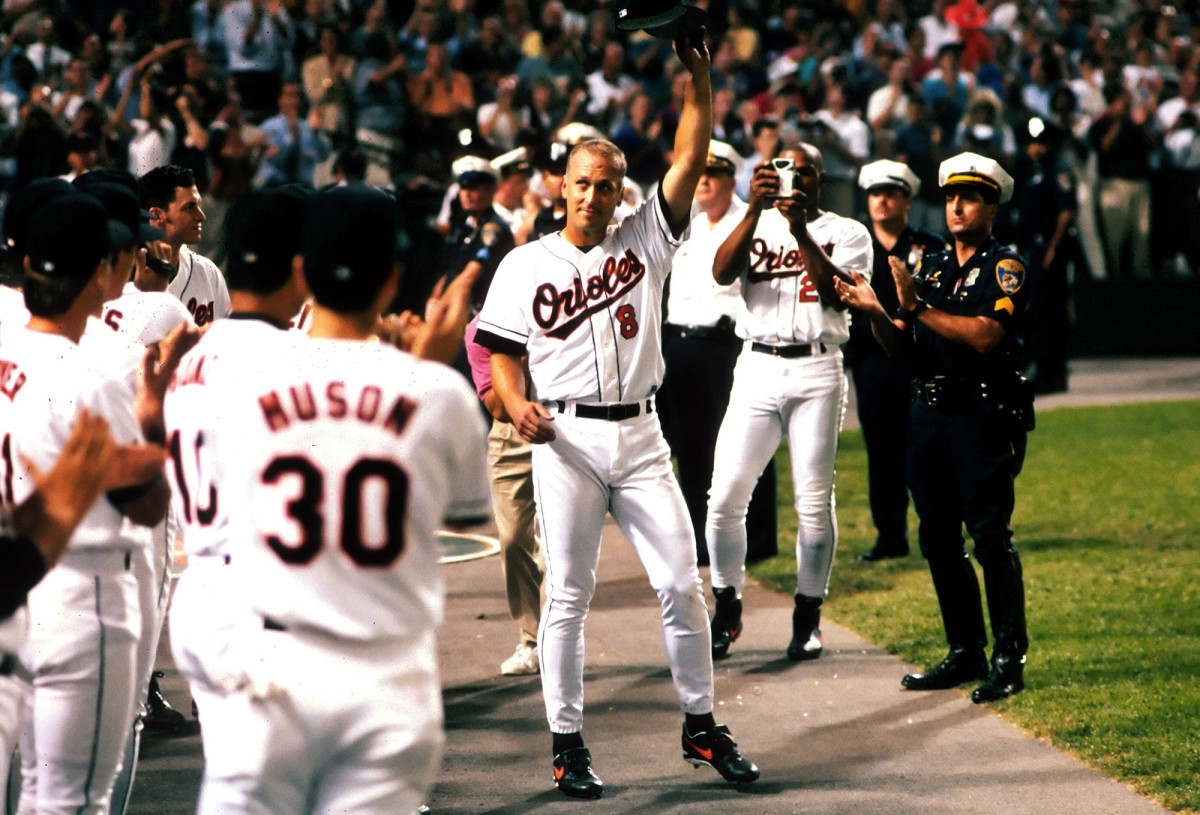
Media Pressure
When Gehrig played, newspaper coverage dominated the lens through which the public viewed the game. Though the Yankees were immensely popular and covered by as many as a dozen beat writers, the coverage was not nearly as intense as it would become decades later, and much of it was supportive. Gehrig read relatively few discouraging words.
Newspaper coverage was still important during Ripken’s career, most of which preceded the Internet, but the coverage was more questioning and at times sarcastic, making for fiercer scrutiny. Cable television and radio talk shows also had become an intrinsic part of the national baseball conversation, adding to the breadth—a nd volume—o f the chatter accompanying the game.
Though Ripken became accustomed to hearing he needed a day off and was selfish to keep going, it created a mosquito-like buzz in his ear that he could not swat away. “I had to cope with everyone saying I was specifically chasing the record, which in my mind was never the case,” Ripken said. “The scrutiny was of a different flavor [for Gehrig]. It seemed like the press was more of an ally with the team. The reporters and players all traveled together and kept secret whatever they did the night before, even when it might affect a player’s ability to perform. It was just more of a partnership.”
Field surfaces
Gehrig played only on natural grass, the most forgiving surface, while Ripken played hundreds of games on artificial turf in domes and dualpurpose (football-baseball) stadiums built in the 1960s and 1970s—s tadiums that were later replaced partly because their fields were little more than a thin layer of carpet over concrete.
In a 1992 University of Iowa study, AstroTurf, an early artificial surface constructed of nylon, was shown to cause more knee injuries, sore muscles, concussions, sprained ankles, and turf burns in pro football players than natural grass. Baseball players experienced similar problems. “Artificial turf shortened a lot of careers,” Steve Garvey said. “That’s the prime reason why guys like me have two replaced hips, because of the pounding that we took playing on AstroTurf, which started at the beginning of my career.”
Playing on artificial surfaces certainly did not make Ripken’s life easier, especially when he dealt with back trouble late in his career. Playing on those surfaces could have exacerbated Gehrig’s chronic lumbago in much the same way. He was fortunate to have avoided that version of “progress.”
Positional demands
Ripken played the majority of his streak at shortstop, one of the game’s most physically challenging and dangerous positions, where collisions are common. But he does not believe he endured a greater injury threat than Gehrig, who played first base, a position supposedly less challenging. “I could make the case that first base is more demanding than shortstop,” Ripken said. “You’ve got a runner coming to first on every ground ball that is a potential collision. You’ve got throws up the line, throws that are high. Yes, at shortstop you have guys coming in to break up double plays, but I would argue that between my size and having the runner in front of me, I was protected. Meanwhile, you’re in every play at first base. It has its own demands, maybe more. I see it as a wash.”
Streak Integrity
Ripken started every game of his streak with the intention of playing nine innings. Unlike every other modern player who forged a long streak, he never used a pinch-hitting appearance or late-game defensive stint to keep his run going.
Gehrig and his managers, meanwhile, undertook contortions to keep his streak going on several occasions. He barely played in a handful of games, most notably in Detroit on July 14, 1934, when he led off the game, singled, and came out. In a 1975 paper, Raymond J. Gonzalez, a member of the Society for American Baseball Research, reported that Gehrig “was relieved by a pinch hitter eight times, by a pinch runner four times, and at first base 64 times” during his streak.
But though Ripken’s streak was purer in that sense, one can argue that playing Gehrig every day made more sense. He averaged 58 more runs batted in per season than Ripken. His career batting average was 64 points higher. His bat was so vital to the Yankees that they needed him every day. Ripken’s defense, power, and general dependability also made him essential, but it can be argued, at least, that a day off now and then might have helped him during his protracted slumps.
Travel
Although Ripken and Gehrig both traveled to half of their teams’ games every year, their road lives were vastly different.
Gehrig traveled only on trains, and though the accommodations were luxurious by that era’s standards, with the players holed up in private cars, removed from the public, trips took many more hours than they would when teams began flying between cities several decades later. Early in his career, Gehrig spent many nights in cramped sleeper cars that were not air-conditioned. Gehrig also never went west or south of St. Louis due to the limited geography of the major leagues in his era. He played in just two time zones.
By the time Ripken came along, baseball had experienced several rounds of expansion, altering its geography, and the nature of travel had changed. Ripken played on the West Coast and in Texas, the upper Midwest, and Canada. He traveled strictly by plane, taking commercial flights early in his career, then charters later. The living was good, especially on charters, which could feature gourmet meals and unlimited drinks, depending on a team’s rules.
Which travel era provided a better platform for playing in every game for more than a decade? Steve Garvey, an independent arbiter in the case of Ripken v. Gehrig, laughed at the idea of a comparison of any kind.
“To measure one streak against the other is complicated and, frankly, an exercise that’s never going to have a firm conclusion,” Garvey said for this book. “I mean, travel, facilities, surfaces, game times—everything is different. Gloves were a lot smaller when Gehrig played. You can go on and on. I prefer what you can say definitively, that both were the only ones to do it within their era. Whatever circumstances each faced, it was hard to play in that many games, a huge challenge, and no one else came anywhere close to doing it for as long as they did.”
Ripken’s streak reached 2,100 consecutive games on August 5, leaving him just 30 away from Gehrig. Angelos wanted to fire Regan after the Orioles’ disappointing season reached a nadir with four straight losses in Boston, but the owner held off, thinking a change would detract from the streak celebration soon to occur. Ripken’s record had become the team’s priority.
After playing 10 games on the West Coast in late August, the Orioles flew home for the nine-game homestand that would contain the recordtying and record-breaking games. The front office wrestled with how to commemorate the achievement on those nights, even asking Ripken, who admitted he was stumped. “I just go out and play a game. How do you celebrate that?” he said.
Several brainstorming sessions produced a plan. After the top of the fifth inning of every game of the homestand, a summary of the rule declaring the game official would appear on Camden Yards’ giant video board, accompanied by “Day One,” a soaring pop instrumental by composer John Tesh. When the music built to a crescendo, four 10-foot-high, orange-and-black banners, aligned on the B&O Warehouse overlooking the park, would unfurl, revealing the streak’s latest number now that the game was official.
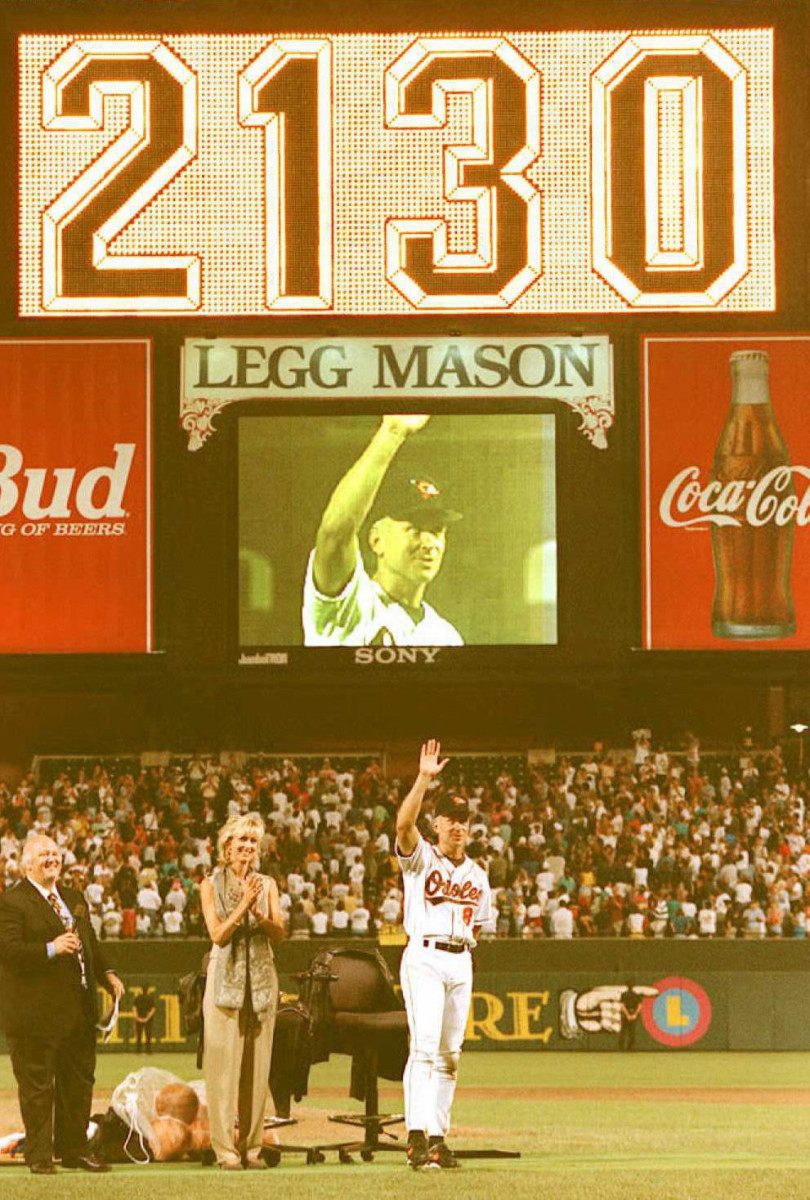
The scene debuted during the first game of the homestand, on August 29. As Ripken took the field in the bottom of the fifth, “Day One” played and the “official game” rule appeared on the scoreboard, stating that “a game is official and all stats count when a) the trailing team has batted five times, or b) the score is tied after five innings.” The music built to a crescendo, and the banners on the warehouse unfurled, revealing the number “2,123.” That was how many consecutive games Ripken had now played in.
The fans had little reaction that night, but they caught on quickly. By the third game of the homestand, they were standing and cheering throughout the fifth-inning commemoration, sending a palpable emotional charge through the ballpark.
The streak reached 2,128 games on September 3, a sunny Sunday afternoon, with the Orioles playing the finale of a weekend series against the Seattle Mariners. As the game began, Ripken lightheartedly raced Brady Anderson onto the field, then made the first putout of the game, ranging back and to his right to catch a pop-up down the left-field line. In the bottom of the first, he batted with one out and runners on first and second, worked the count full, and fouled off three pitches. On the 10th pitch of the at-bat, he singled to right-center, driving in his 67th run of the season.
In the top of the second, he charged onto the infield grass for a slow roller, grabbed the ball, and flipped it to Rafael Palmeiro, the Orioles’ first baseman, in time to beat the runner. In the bottom of the inning, he grounded out with two runners in scoring position. As the game continued, Ripken grounded out to first, grabbed a hard-hit bouncer and started a double play, flied out to center, and singled in another run. Though it was just a typical day of ups and downs, everyone in the ballpark, including the players, knew they were witnessing history. The Mariners stood on the top step of their dugout and applauded along with the fans when the game became official in the middle of the fifth inning.
“There’s a lot of power in that moment,” Ripken said after the game. “I’m appreciative, but I don’t know what to do. I become lost on the field. You stand there and start reflecting on your career. It’s hard not to get teary-eyed.”
Though they would miss the record-tying and record-breaking games, the Mariners were excited they had participated in the final buildup. “I’m so glad we were here to see his. I get goose bumps during that ceremony,” Seattle infielder Rich Amaral said. “What Cal has done is amazing. We all have so much respect for him.”
At the end of the day, Ripken spoke to reporters before heading off to another photo shoot. His stat line: two singles, two runs batted in, two putouts, and six assists in a 9–6 loss.
“How are you holding up?” a reporter asked.
He had batted close to .400 over the past week and was averaging almost one run batted in per game over the past month.
“I think I’m doing OK,” he said with a smile.
